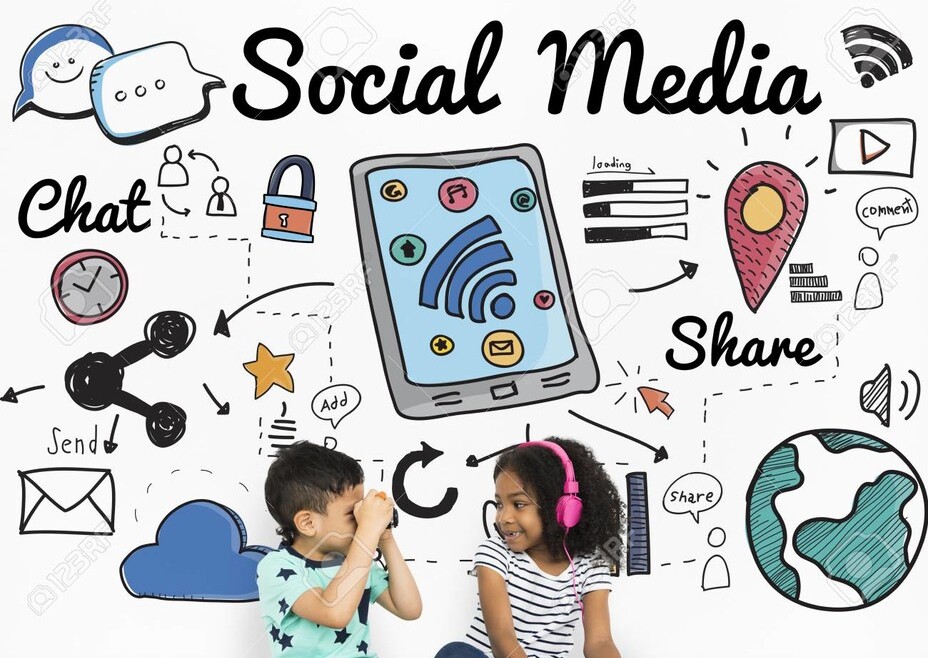Social media use and computer games have rapidly become popular culture amongst children, young adults. As a result, a lot of research have focused on their impact different life activities, especially on the academic performances of users. This article highlights the findings of some of the best research products available on the subject as well as the observations our own research team has made over a period of 5 years. For the purpose of this article therefore, the children to young adults range refer to the ages 3-20 years.
Of course, social media and computer game use can affect all ages in both negative and positive ways but the selected age range is important to us at Legacy Education Tools, as majority of our students fall within this age bracket. It is therefore imperative to echo this information to our existing and potential clients. Parents, teachers/tutors and students form an important team when it comes to education in general and every member of the team needs to be well informed about some of the known impacts of this global ‘phenomenon’.
Social media channels and computer games are separate domains but we coupled them together because in this age of highly networked systems, it can be difficult to separate the two sometimes as they are embedded in each other by their creators. For example, there can be games on Facebook (Meta) or Youtube and one can also find social media links on game platforms, so they are interwoven.
Like any human situation, there are always the good, bad and even the ugly sides. The issues are highlighted below.
The ‘goods’
There is such a chorus of conclusions drawn by researchers and critical observations about the advantages children and young adults may derive from using social media and playing computer games.
1. Social media and game use can improve literacy skills – the ability to read, write. The argument is that children in their early ages (3 years onwards) learn phonics, word recognition and therefore early year vocabularies. Older users get engaged with volumes of texts while on social media platforms. In this sense, these platforms are used as either the main or supplementary source of education.
2. Enhance social skills and teamwork: As the name suggests, social media help users to be connected to other cultures. Children therefore are able to learn some of the elements of these different cultures, and by so doing, they can possibly integrate socially at functions or places where the population is culturally diverse. Further, many games require players to work together to achieve shared goals, fostering teamwork and communication skills.
3. Cognitive Skills: Games often require players to solve problems, make quick decisions, and think critically. Strategy games, for example, improve planning and problem-solving skills.
4. Motor Skills: Action and sports games can enhance hand-eye coordination and fine motor skills.
5. Emotional Development: Games often require players to try repeatedly to overcome challenges, which can build a resilience mind set. It can also help reduce stress and improve emotional well-being if the game is enjoyable.
The bad and the ugly
Just as it may support in their academics and other areas, these digital platforms can also do real harm and there are some compelling evidences backing this claim from research.
1. Differences of two learning environments
Most of these contents on social media are enhanced with animation and sound effects that easily capture the attention of users. It is no surprise therefore that one may witness a child’s eye fixed on the screens without a blink. The sounds and animations are interesting hence the excellent focus. When they go on to learn in school or home setting, however, there is a sharp contrast in terms of experience. There is no or less attention grabbing sound tracks and animation in the classroom setting except the voice of the teacher. So what would you expect – diminishing attention.
2. Inadequate Cognitive and Creative Ability
For example, a child who watches nursery rhymes or a video based programme may acquire some literacy skills such as vocabularies but will miss out on the opportunity to apply brains to solve critical challenges. This is so as video-based programmes suppress reflexive power and skills, which adversely impact logical reasoning and memory. Long term exposure to programmes like that can cause the child to be challenge-aversive, making the child unwilling to push him or herself to solve reasoning problems. They also become consumption-centred individuals instead of being creative. The result of this problem manifests in many ways such as unwillingness to complete academic tasks, less creativity in written assignments, and less participation in class discussions (although these may also be signs of other issues).
3. Speech difficulties
Although difficulties with speech can be linked to medical conditions such as autism, research also finds that long term exposure to less interactive programmes on social media platforms robs a child the opportunity to develop verbal skills. Some single-child parents as well as single parents frequently report this problem. As the only child of the household, the absence of other children or age mates pushes the parents to occupy the child with these less interactive digital programmes. In some other circumstances, these programmes are used to pacify the child for an unhealthy length of time when he or she is distressed, without verbal engagement with the parents. As a result, jaw muscles used in talking are left unexercised, making it hard for the child to verbally express themselves. We would like to classify this problematic situation as a cyber-consumption abuse requiring an urgent mass public sensitization and education.
4. Poor vision
There is also a trend results from critical observation that show that continuous use of digital screens can be linked to poor eye sight in children and in fact all other ages. There is the science to explain this but for now we want to highlight the problem as an urgent one. Over time, a poor sighted child receiving no treatment can be academically affected to say the least. Signs to look out for include, the need to get close to a screen before being able to see; continuous rubbing of the eyes with the fingers; confusion with the letters ‘b’ and ‘d’ when asked to say or write.
Recommendations for Parents
Balance and Moderation: Ensure that gaming is balanced with other educational activities and physical exercise. Young adults can be engaged with extra curricula activities such as swimming, art & design, music, and other vocational skills training. Again, local councils do organise free or subsidised programmes in some of these areas.
Age-Appropriate Content: Choose games that are appropriate for the child’s age and maturity level.
Educational Value: Select games that have clear educational benefits and align with the child’s learning needs and interests, allowing the child to apply ideas learnt in a guided task.
Parental Involvement: Engage with children about their gaming experiences and encourage discussions about the content and skills learned. Where the child hasn’t reached reading age, it is strongly advised that the parents frequently read to the child and have conversations about the content. The child is likely to continue this reading habit as they grow. In cases where the parents cannot read, they may join play or reading groups provided by local councils, which are free of charge.
Monitoring: All time spent by children and young adults must be closely monitored, supervised and timed according to recommended usage period per sitting. Reconsider your purchase decision if an app designer or producer does not specify recommended duration of use by different age groups.
Reward Homework: Request homework from the child’s school to occupy him or her. Regularly inspect homework books and records. This can serve as a great motivation factor for the child to complete assignments on time. Moreover, the parent may be able to spot early signs of academic weaknesses for appropriate remedial actions. Games and the likes may be used as reward during weekends for a specified healthy length of time.
Ensure that the child is not close to the screen of the device being used. You may also consider purchasing professional and quality screen filters to reduce the chance of dangerous light rays entering into the child’s eyes.
Invest more in creativity –enhancing toys rather digital devices.
Computer games have become a prevalent form of entertainment among young people, but their impact extends beyond mere amusement. When leveraged appropriately, computer games can serve as effective educational tools that enhance learning in various ways. Here are some key aspects of how computer games can aid young people in learning:
Conclusion
While social media and digital games are often seen primarily as a source of entertainment, they hold significant potential as educational tools or to cause harm. Parents and young adults need to be aware of these to select the right games and channels. By integrating these beneficial channels thoughtfully into educational contexts, children and young adults can develop a wide range of skills that are beneficial for their academic and personal growth.
By the Legacy Research Team







0 Comments